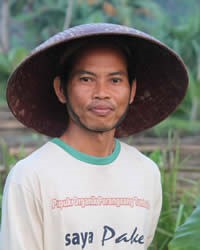Java Banyumasan in Indonesia

Photo Source:
Mufid Majnun - Pixabay
|
Send Joshua Project a map of this people group.
|
| People Name: | Java Banyumasan |
| Country: | Indonesia |
| 10/40 Window: | Yes |
| Population: | 9,548,000 |
| World Population: | 9,548,000 |
| Primary Language: | Javanese |
| Primary Religion: | Islam |
| Christian Adherents: | 2.50 % |
| Evangelicals: | 1.18 % |
| Scripture: | Complete Bible |
| Ministry Resources: | Yes |
| Jesus Film: | Yes |
| Audio Recordings: | Yes |
| People Cluster: | Java |
| Affinity Bloc: | Malay Peoples |
| Progress Level: |
|
Introduction / History
The Java Banyumasan, also called Java Mendhoan or Java Serayu, live in the southwest part of the province of Central Java. They are one of the subgroups of the Java people groups, but they have their own cultural variations which differ from other Java peoples.
The Java Banyumasan speak the Banyumasan dialect of the Java language, but they understand conversations in most other Java dialects. Their own dialect contains specific vocabulary difficult for other Java groups to understand. Their use of 'a' rather than 'o' enables them to learn the national Indonesian language more quickly than other Java subgroups.
What Are Their Lives Like?
Most of the Java Banyumasan people make their living from farming, but compared to other Indonesian people groups, they are fairly advanced in this field. Besides having fertile land, they use the land well, increasingly so now that they have modern equipment.
The development of Cilacap as an industrial city illustrates the growth in the industrial sector among the Java Banyumasan. This growth includes both heavy industry and small industries, such as production of woven bamboo and brown sugar products. Commodities such as these not only fill needs among the Java Banuymasan but also bring income from sales in other areas.
What Are Their Beliefs?
The majority of the Java Banyumasan identify as Muslims; however, only about 20% practice their faith seriously. Some Java Banyumasan also follow animistic beliefs, worshiping spirits from the unseen world. These spirits include bujungan (shrouded ghosts, shaped like a corpse in burial cloth); jangkrong (shaped like a human skull); and dhemit (spirits that live at shrines). They consider certain graves, mountains, caves and seas as sacred places.
Some of the Java Banyumasan still seek help from a dukun (shaman/healer/occultist) if they are sick or bothered by spirits. They often hold ceremonial meals or ritual feasts, which include use of mantras and offerings to spirits, to protect their area from calamity.
What Are Their Needs?
The Java Banyumasan people still need assistance to increase their agricultural production. They need infrastructure such as more dams and a better irrigation system to improve their harvests.
The Java Banyumasan also need to develop new industry outside the city of Cilacap. The opening of more work opportunities could decrease migration of youth to Cilacap and other cities.
Prayer Points
Ask God to free the Java Banyumasan from any spiritual oppression and draw them to the Lord of lords.
Thank God for the availability of the Bible in the Javanese language; pray that many Java Banyumasan will encounter God's word and recognize it as truth.
Ask God to send workers to the Java Banyumasan to share the gospel with them and help them further develop their industries.
Pray for Java Banyumasan people to make disciples who will make even more disciples.